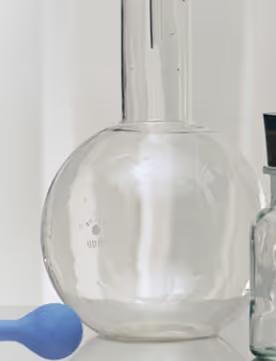When you are healthy, your immune systems work like a synchronized, well-oiled machine. However, sometimes the immune system fails to distinguish between foreign pathogens and healthy cells. When this happens, it can attack the body’s own healthy cells and tissues by mistake, leading to autoimmune disease. (Source) This attack on the body’s cells causes inflammation that can lead to joint pain, skin rashes, and other symptoms. In some cases, an autoimmune disorder can become more serious than a skin rash and affect many different body systems.
Autoimmune rashes may sometimes be a result of autoimmune disease and further imbalance of the body’s physiological functions.
Although the exact cause of autoimmune disorders is unknown, it is thought that genetics, environmental factors, and lifestyle choices play a role. (Source) Autoimmune disorders can occur at any age and affect both males and females, but they are most common in women and people over the age of 60.
While cures for autoimmune diseases do not exist, treatment plans can be employed to reduce symptoms, slow disease progression, and manage quality of life.
In today’s edition, we’re exploring more about autoimmune rashes, which can be symptoms and potential indicators of autoimmune diseases.

What Is Autoimmune Rash and Why Should I Care?
An autoimmune rash is a rash that results from an autoimmune response. Autoimmune rashes often appear as itchy bumps or small patches of red, raised skin that may blister and ooze when aggravated. They can appear nearly anywhere but are most common on the cheeks, eyelids, elbows, knees, and knuckles.
Sometimes a rash is just a rash and not indicative of further disorders or diseases. However, autoimmune rashes may sometimes be a result of autoimmune disease and further imbalance of the body’s physiological functions. For example, chronic rashes can be caused by an autoimmune dysfunction of the thyroid hormone, such as occurs with Hashimoto’s thyroiditis. (Source)
While most rashes are not dangerous, some can be warning signs of an underlying autoimmune disease that affects the skin, which may need to be further treated.

What's the Connection Between Autoimmune Diseases and Autoimmune Rash?
The skin is our largest organ and also our first line of defense against pathogens. Not just a passive covering, the skin plays an active and essential role in immune response. Because of this, though, it presents a large target when autoimmune diseases turn on the body’s own tissues. (Source)
A rash is an abnormal change in the skin, whether or not it is red, itchy, or bumpy. While most rashes are not dangerous, some can be warning signs of an underlying autoimmune disease that affects the skin, which may need to be further treated.
Dysbiosis, an imbalance of gut microbiota, can lead to increased inflammation and may trigger an autoimmune disease. Autoimmune disorders may also be caused by infections and viruses.

What Are Common Types of Autoimmune Disease Rashes?
There are more than 80 types of autoimmune disorders, with many different causes. Dysbiosis, an imbalance of gut microbiota, can lead to increased inflammation and may trigger an autoimmune disease. (Source) Autoimmune disorders may also be caused by infections and viruses. (Source)
The most common types of autoimmune disorders that cause skin rashes include:
- Lupus. Lupus, sometimes called systemic lupus erythematosus (SLE), is a chronic autoimmune disorder that can damage many different body systems, especially the joints, skin, kidneys, and heart. This skin disease commonly produces a butterfly-shaped red rash on the nose, skin, and other parts of the body following sun exposure. (Source)
- Psoriasis. This autoimmune disorder primarily affects the skin and joints. The most common type is chronic plaque psoriasis, which forms raised, scaly patches on the skin called plaques. (Source)
- Eczema. Also known as atopic dermatitis, this chronic and inflammatory skin disorder usually begins in childhood. Eczema rashes are usually red, itchy, and scaly. (Source, Source)
- Dermatomyositis. This chronic inflammatory disorder of the skin and muscles manifests as erythema, or redness, over the elbows and knees, and patches on the skin overlying joints, chest, back and shoulders, and scalp. This disease can also cause muscle weakness. (Source)
- Lichen planus. This inflammatory skin disease causes itchy, purple lesions on skin, as well as white patches on mucous membranes that may include painful sores. (Source)
- Blistering skin lesions. Autoimmune blistering diseases, also known as autoimmune bullous disorders, cause skin layers to separate, creating spaces that fill with fluid. These blisters may occur on the skin or on mucous membranes. (Source)
- Pemphigus. There are several different types of pemphigus, including one that resembles a lupus rash. These blistering diseases are more common in women, and may cross the placenta to cause temporary outbreaks in newborns. (Source)
- Bullous pemphigoid diseases. These blistering autoimmune diseases are most common in the elderly. They form large, tight blisters called bullae that can be extremely itchy. The bullae may spread across the chest and abdomen and cause severe skin damage when they break open. (Source)
Autoimmune disorders can be treated with medications and lifestyle changes. Surgery and other treatments may also be possible.

What Are the Side Effects of Autoimmune Rash?
Some autoimmune rashes, such as the butterfly-shaped rash sometimes seen over the nose and cheeks of people with lupus, are visible but otherwise not bothersome. Some rashes, though, can be painful or itchy, and some can lead to serious infection and even disfigurement.
Complications of autoimmune rashes may include:
- Severe itching
- Pain
- Erosion of the skin or mucous membranes
- Blistering
- Urticarial plaques (rough, itchy patches)
- Infection (from broken skin or blisters, especially after scratching)
- Difficulty chewing and swallowing (if mucous membranes in the mouth and throat are affected)

.avif)
%20(1).avif)
%20(1).avif)

.avif)





%2520(1).avif)


.avif)



.avif)

%2520(1).avif)



